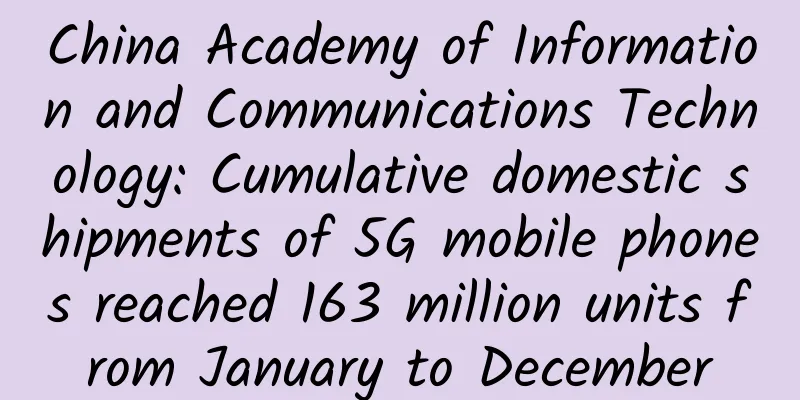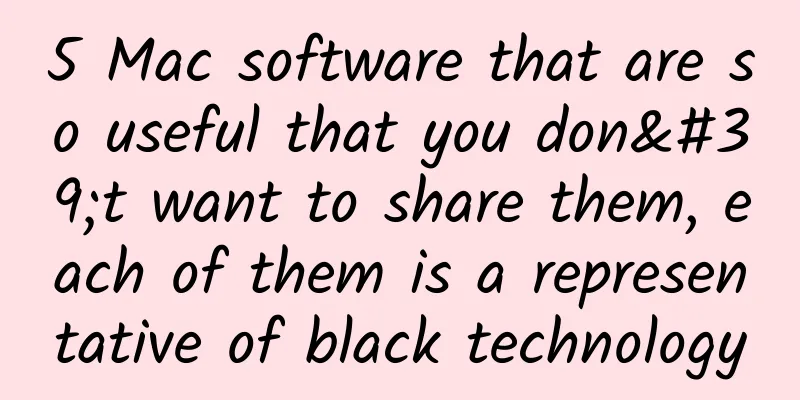Opportunity or chicken ribs? eMTC should not follow the NB-IoT price war

|
Recently, the official website of the Ministry of Industry and Information Technology released the "Public Solicitation of Opinions on the Notice on Enhanced Frequency Usage of Machine Type Communication (eMTC) Systems (Draft for Comments)", which clearly proposed the requirements for radio frequency technology of eMTC base stations, base station settings and interference coordination management. In the context of the current development of the Internet of Things, the release of this draft for comments is interpreted as a key move in paving the way for the commercial use of eMTC. However, despite the strong push from all parties, the development of NB-IoT has not yet achieved the expected background of "bringing huge opportunities and space to the Internet of Things market", and the progress of eMTC commercialization does not seem to have attracted much attention from the industry. Whether it is an opportunity or a waste may be a question for many people. 1. The further improvement of IoT infrastructure does bring opportunities to the industry At the Central Economic Work Conference held at the end of 2018, it was proposed that "investment should play a key role, accelerate the pace of 5G commercialization, and strengthen the construction of new infrastructure such as artificial intelligence, industrial Internet, and Internet of Things". The eMTC network is a very typical IoT infrastructure, and it is an infrastructure that has not yet started construction. From the perspective of macroeconomic regulation, it will have a certain leverage effect on the entire industry. The eMTC network has been in practice overseas for nearly two years, and China can be said to be well prepared at the infrastructure level. 1. Global eMTC deployment and application As early as the Mobile World Congress in early 2017, the world's nine major operators simultaneously announced the commercialization of eMTC networks. Previously, the world's major operators were more enthusiastic about NB-IoT, and the deployment of these nine operators quickly increased the power of eMTC. According to GSMA data, by the end of 2018, 23 eMTC networks had been officially commercialized around the world, providing IoT infrastructure support for the countries and regions where these operators are located. Global commercial eMTC network status (Source: GSMA, IoT Think Tank) In the LTE-M Commercial Cases released by GSMA, typical applications of AT&T in the United States and Telstra in Australia were studied. Among them, AT&T showed its smart white appliance application cases launched in the United States, using eMTC network to replace the original WiFi solution, giving users a simpler networking solution. In addition, the AWS IoT 1-Click device launched by AT&T and Amazon accelerated the development of one-click intelligence in some scenarios. Telstra in Australia used eMTC network to launch asset management solutions and logistics tracking solutions for solar equipment. However, overall, the number of connections achieved by overseas operators' eMTC networks is not large, and there are a large number of application projects but they have not yet been scaled up. GSMA estimates that the number of eMTC network connections of AT&T and Telstra is less than one million. 2. Are domestic operators ready? In the past two years, leaders of China Telecom and China Unicom and some public documents have mentioned the trial and commercialization plans of eMTC many times. China Telecom's 2017 performance report also mentioned that the eMTC network will be officially commercialized in 2018. However, as of now, major operators have not officially put it into commercial use. In theory, the three major operators have already met the conditions for commercial use of eMTC. On the one hand, as a narrowband cellular IoT network technology based on LTE, it can be soft-upgraded through the existing LTE network, with little change on the base station side and the core network can be shared, so the eMTC network can be quickly commercialized. Previously, the NB-IoT network still required the update of some equipment, so the eMTC network was deployed faster. At present, the three major operators have built a nationwide LTE network, and the deep coverage of major places has also been completed, and the foundation for soft upgrading the existing network to eMTC has been laid. Previously, China Mobile did not have a first-mover advantage in NB-IoT/eMTC deployment due to the lack of an FDD license, but with its acquisition of an FDD license, it has also laid the foundation for rapid upgrades in the deployment of FDD-based infrastructure across the country. On the other hand, operators have been promoting the testing and trial commercialization of eMTC networks and promoting cooperation in the industry chain. Taking China Telecom as an example, as early as mid-2017, China Telecom began to carry out eMTC field tests, conducting eMTC comparative tests in different scenarios and frequency bands to understand the impact of resource allocation on user experience. The field test uses software upgrades on the existing 4G network, and the way in which eMTC and LTE share wireless resources to verify the impact of the eMTC network on the 4G network, verify the functions and performance of eMTC switching, collect and analyze eMTC key parameters and frequency strategy configuration, and prepare for the commercial use of eMTC. Of course, the readiness of operators does not mean that the entire industry chain is ready. This infrastructure can be built in a short period of time, but the development of the entire industry driven by it may not be apparent in a short period of time. 2. The upstream of the eMTC industry chain has begun to take shape In terms of the industrial chain, just like the development of NB-IoT, it first needs the support of a large number of chip and module manufacturers. In the past few years, the upstream of the industrial chain represented by chips and modules has begun to take shape and has accumulated a lot of experience. 1. Multi-mode chips are the mainstay, but the threshold for single-mode is not high As cellular IoT manufacturers at home and abroad have focused more resources on NB-IoT, especially in China, the current eMTC chip suppliers are mainly overseas companies. Only RDA has launched corresponding products in China, but they have not yet achieved mass production. Moreover, most of the chips launched by these manufacturers are multi-mode, including NB-IoT/eMTC dual-mode and NB-IoT/eMTC/2G triple-mode. Among them, Qualcomm is a firm promoter of eMTC and multi-mode chips. From the initial MDM9206 to the MDM9205 released at the end of 2018, they are all multi-mode chips that adhere to NB-IoT/eMTC/2G. The main eMTC chip manufacturers and their products include: eMTC chip manufacturers and models (Source: Internet, IoT Think Tank) In the early stages of market development, it is undoubtedly a common practice to launch products in a multi-mode form to reduce uncertainty and risk. However, with the increasing number of eMTC commercial networks and applications, lower-cost single-mode chips will be needed in the future. Many friends from chip manufacturers in the industry said that due to the close relationship between eMTC and 4G, it is very fast to cut and launch eMTC single-mode chips based on LTE chips. In addition to those traditional LTE chip manufacturers, there are also a large number of small teams that also have LTE chip design capabilities and may join the eMTC single-mode chip queue in the future. 2. The module already has a ready-made community In China, module manufacturers have experience in developing eMTC products. In 2017, the IoT Think Tank cooperated with Qualcomm to organize multiple module matchmaking meetings based on MDM9206. More than a dozen mainstream module manufacturers in China have launched corresponding products, including Quectel, Yichuang, Longshang, SIMCom, Gosuncn, Meige, Youfang, Yuge, Qijun, Kuanyi, etc. However, since there is no eMTC network in China, domestic module manufacturers are unable to achieve eMTC connection in the existing network. Most of their modules are used in NB-IoT or 2G scenarios. In addition, the price of NB-IoT modules has dropped rapidly in the past year or so. These multi-mode modules based on NB-IoT/eMTC/2G have no place to be used. Overseas manufacturers have commercial eMTC networks, so the real demand for eMTC modules is more worthy of attention. Take AT&T as an example. The operator regularly publishes its certified eMTC chips and module products. When the eMTC network was commercialized in 2017, the highest price of its certified eMTC modules was about US$7.5. According to public information, the eMTC modules certified by AT&T include: AT&T-certified eMTC module information (Source: AT&T, IoT Think Tank) It can be seen that the majority of modules certified by AT&T use Qualcomm chips. With the increase in eMTC network deployment, the cost of chip modules will drop significantly, and more manufacturers will participate. Of course, after the chips and modules are ready, the corresponding terminals and applications also need to be developed as soon as possible. At present, these links are not mature enough compared to NB-IoT. 3. Opportunities and disadvantages from the cross-complementarity of eMTC and NB-IoT From the perspective of overseas markets, at least 13 operators have deployed NB-IoT and eMTC networks in the same country or region. Theoretically, the two are mainly facing scenarios with different speeds and reliability. There may be some overlap between the scenarios, but they are more complementary and jointly cover most of the low- and medium-speed IoT scenarios. However, in actual promotion, there will be a game of interests among multiple aspects of the industry chain. 1. Intersection and complementarity between functions After the 3GPP R13 protocol was frozen in June 2016, NB-IoT became a hot topic. From the perspective of application scenarios, the differences between NB-IoT and eMTC are mainly focused on three points: the peak rate of eMTC is 1Mbps, which is higher than 250Kbps of NB-IoT; eMTC supports cell switching and has good mobility, while NB-IoT does not; eMTC supports voice, while NB-IoT does not. In particular, NB-IoT only supports cell reselection and does not have mobility under business conditions, which is considered to be limited in many scenarios. However, in the 3GPP R14 core protocol frozen in August 2017, NB-IoT has seen several functional enhancements, including the ability to switch cells in service status and support positioning in terms of mobility, according to the article "Interpretation of the Seven Major Changes in NB-IoT R14" published by Lu Qiang of China Telecom Jiangsu. These enhancements have expanded the application scenarios of NB-IoT and also created more overlaps with the scenarios covered by eMTC. I have communicated with many friends who work in wearable devices, tracking and positioning, and asset management. Previously, the service scenarios they mainly provided had some demand for eMTC, but after NB-IoT achieved mobility enhancement and positioning, the demand for eMTC in these scenarios is not so obvious. The typical advantage of eMTC is that it supports voice and medium-speed bandwidth. It is irreplaceable for NB-IoT in scenarios that require certain bandwidth data, pictures, and emergency calls. 2. Thoughts on eMTC after the commercialization of NB-IoT More than two years ago, the industry had high hopes for NB-IoT, hoping that it could take on the heavy responsibility of "big connection" of the Internet of Things in a short period of time. However, after more than two years of commercial promotion, the results of the most connections are slower than previously expected. As we all know, NB-IoT is considered to be a way to carry more than 60% of the connections of the cellular Internet of Things. The fact that these IoT applications have not been implemented as expected is not because the upstream suppliers are not working hard to promote them, but it involves the entire industry ecosystem, especially the problem that the large-scale demand of downstream applications has not yet been stimulated. Faced with the same problem, if the network that carries the vast majority of connections does not develop as fast as expected in a few years of commercial use, then the development of an eMTC network after commercial use may also not meet expectations. Factors such as the maturity of the industry ecosystem and insufficient demand encountered by operators in the process of promoting NB-IoT may be one of the reasons why China is not active in the commercial use of eMTC. 4. Expectations for eMTC Commercialization Although eMTC has not yet been commercialized, the regulator's announcement of the eMTC spectrum management system can be said to be a positive signal. Coupled with the support of macroeconomic policies for IoT infrastructure, the commercialization of eMTC is likely to accelerate. From the development path of NB-IoT in the past few years, I believe that eMTC commercialization needs to learn some lessons from the past.
At present, the 4G network has matured, and NB-IoT has gathered a lot of resources, adhered to value orientation, and insisted on the applicability of application scenarios. The eMTC between the two should bring opportunities to the Internet of Things market, rather than being a waste. |
<<: Where can I find the IP address of my router?
Recommend
Huawei and its ecosystem partners share the responsibility for enterprise digital transformation and cloud migration
[51CTO.com original article] There is no doubt th...
TripodCloud: Large bandwidth CN2 GIA line VPS hosting 18% discount starting at $59/year, optional large hard disk
TripodCloud is an early-established Chinese hosti...
Entering the Third-Party Certification of IPv6 Technology
IPv6 certification assesses products, networks an...
They are all chips, so why can’t computer CPUs be used in mobile phones?
This question is actually very simple. As long as...
10 pain points: How IT departments face edge computing
From networking and integration to failover, asse...
5G New Year's Guide
The lack of New Year's atmosphere during the ...
The industry's first! Xinhua Sanxun launches the intrinsically safe 10G industrial Ethernet switch
Recently, New H3C Group, a subsidiary of Tsinghua...
Behind Gu Ailing's victory at the Winter Olympics: Communications people are silently persevering
7×24 hours uninterrupted protection Communication...
Fortinet Named a Leader in Gartner® Magic Quadrant for Enterprise-Class Wired and Wireless LAN Infrastructure
Fortinet recently announced that it has been name...
In-depth understanding of the working principle of VLAN with pictures and texts, don't miss it
After learning about several methods and configur...
DPtech and Zhejiang Provincial People's Hospital jointly established a network security operation and maintenance demonstration center
Recently, the network security operation and main...
Get ready for Industry 4.0 with 5G and native AI
The Internet of Things (IoT) is a major business ...
Software testing requires understanding of these network knowledge points
1. Network Classification Telecommunications netw...
Five ways edge computing drives digital business
Every industry has created a new normal: if your ...
Sangfor launches sub-brands - Intelligent Security and Cloud IT, with two major businesses running side by side
[51CTO.com original article] On November 18, at t...









